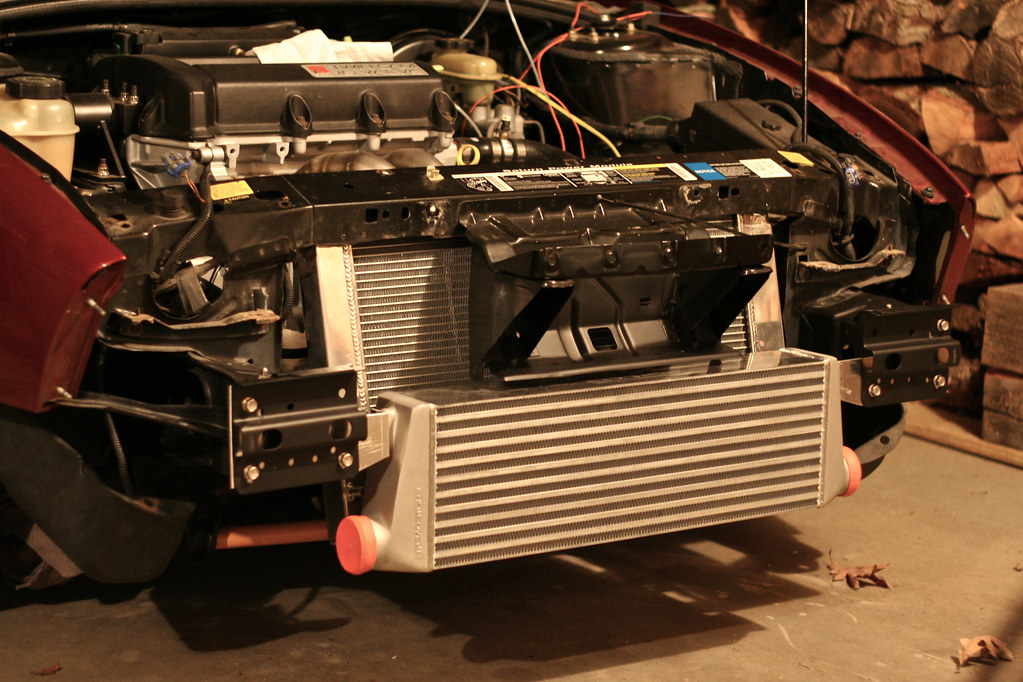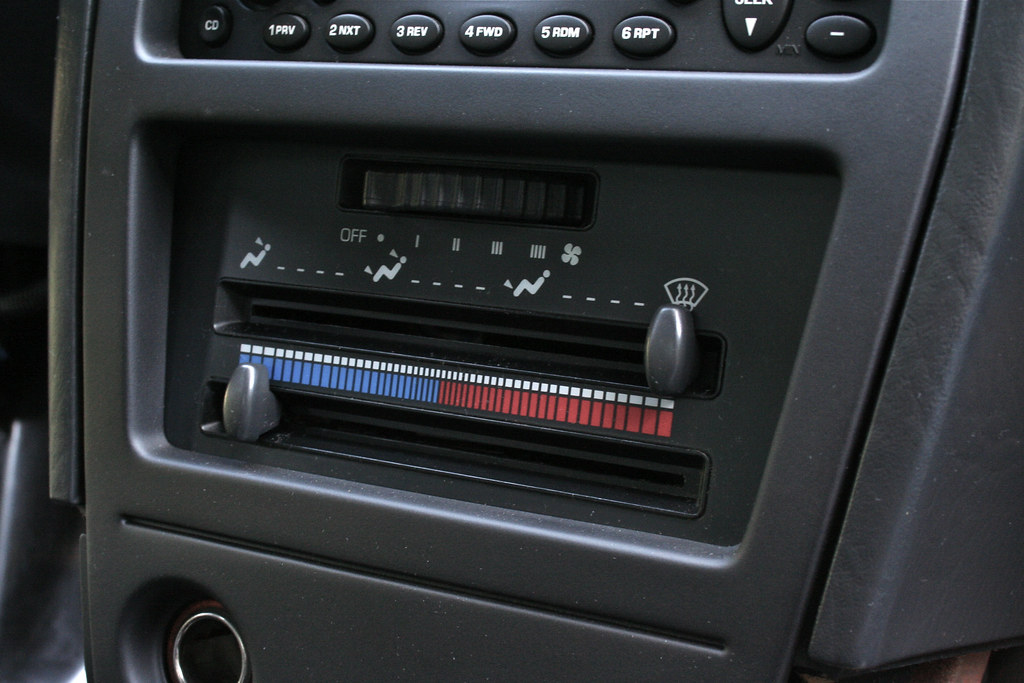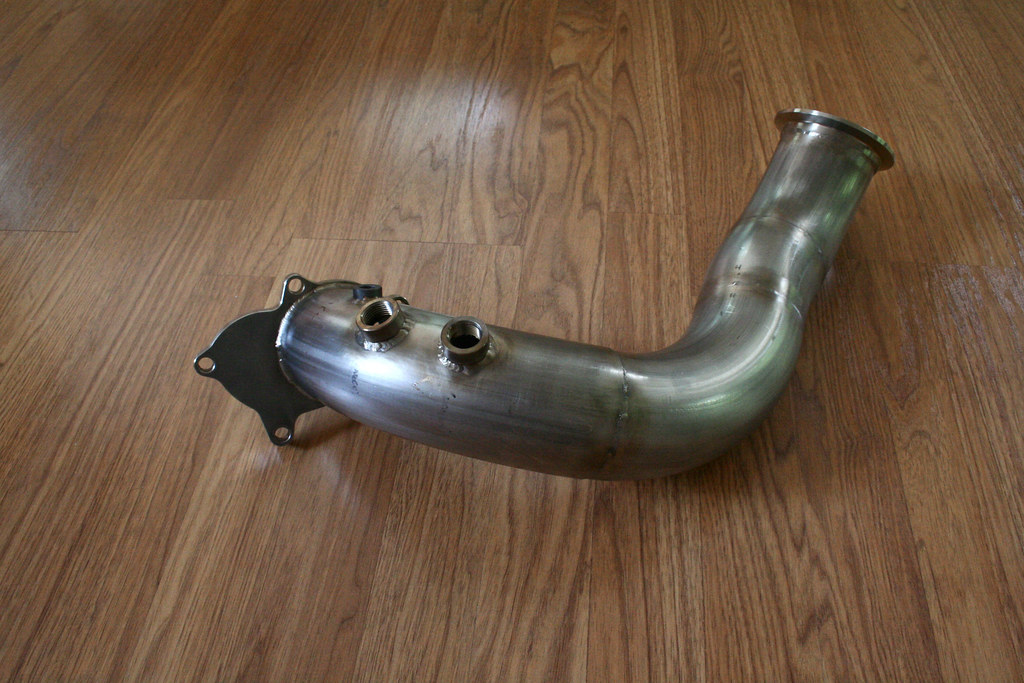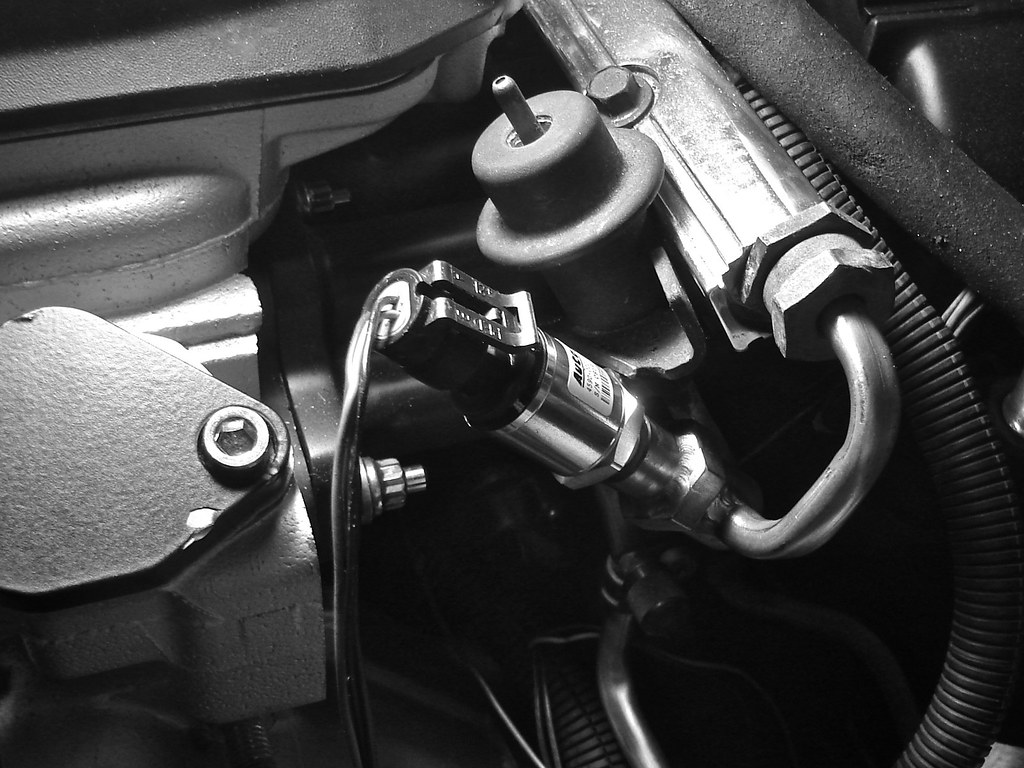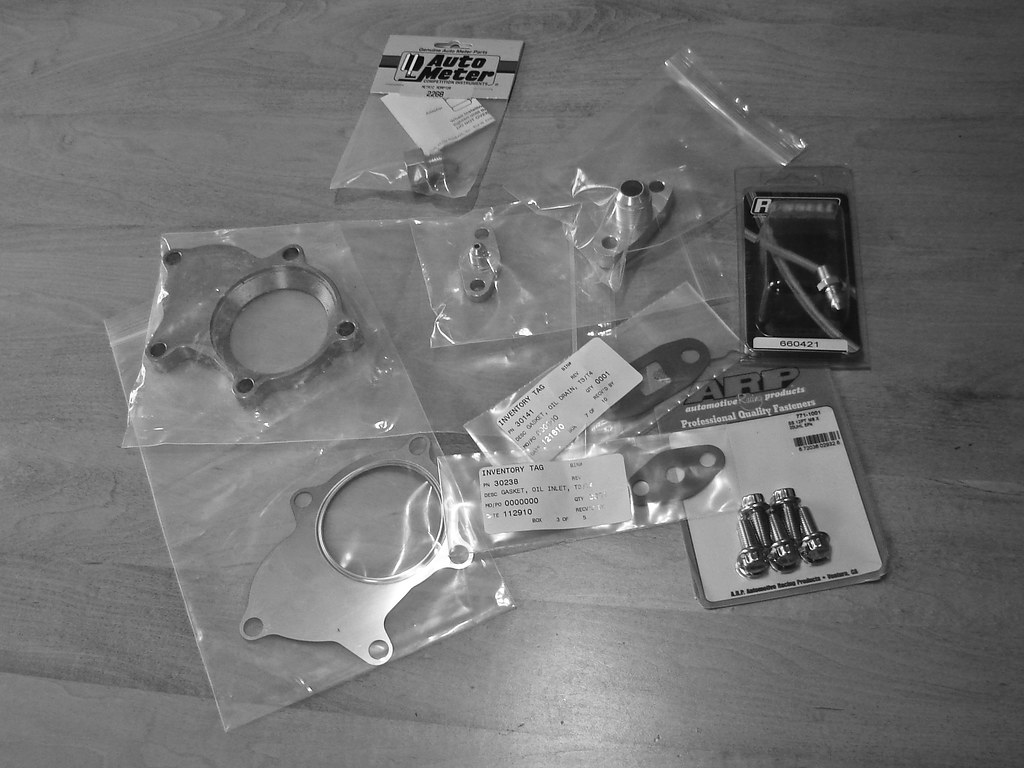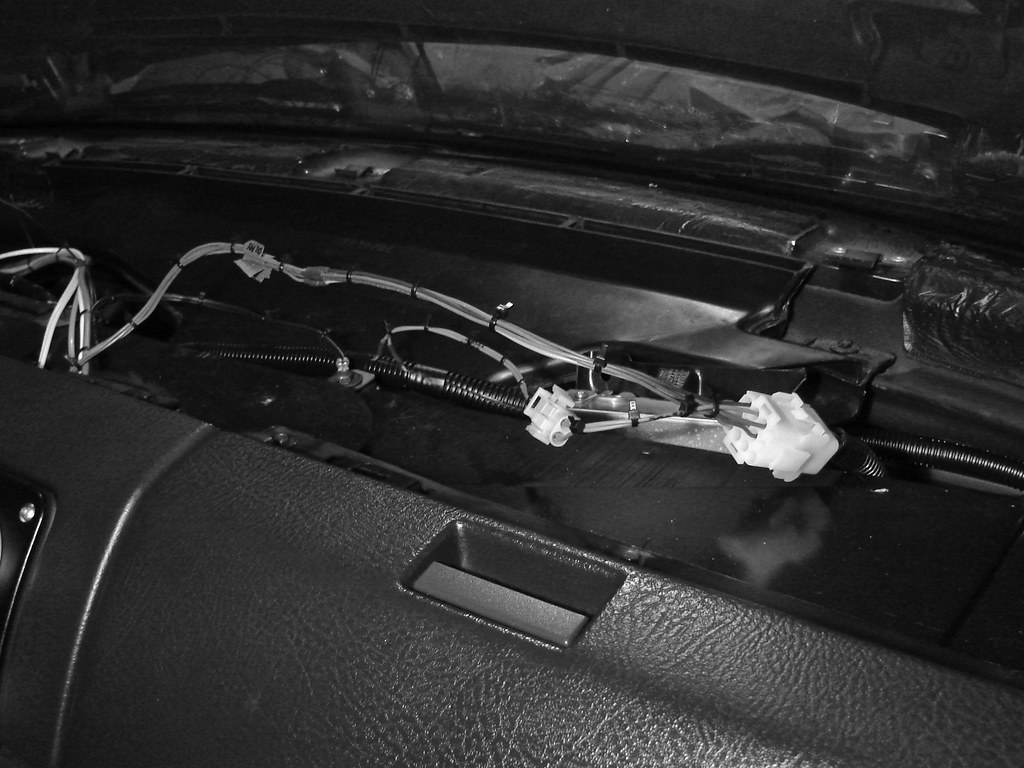These have been welded up for a few weeks now. I've been busy with school finals and haven't had a chance to throw them up here.
Most of the tubing and the blowoff valve flange came from Treadstone while the unpolished piece came from Vibrant (a tighter radius bend to fit between the throttle and the brake reservoir). Welded to that unpolished piece are two Earl's 1/8" NPT bungs for my IAT sensors. It turned out that these bungs were too tall for the sensors, so I actually machined them, then I drilled out the first 1/4" of the threads so I could tap deeper into the piece. The piece on the upper left is the intake. I mocked this up using an old 5" AEM filter (from an old AEM CAI). The filter will reside nicely where the windshield washer reservoir used to be. I fabbed up a nice bracket, that utilizes an old mounting point for the ac-compressor bracket, to support the assembly. I've got a little finish work I want to do to them, then they will be off for powder coating! I'll post more detailed pictures once they're beautified.


